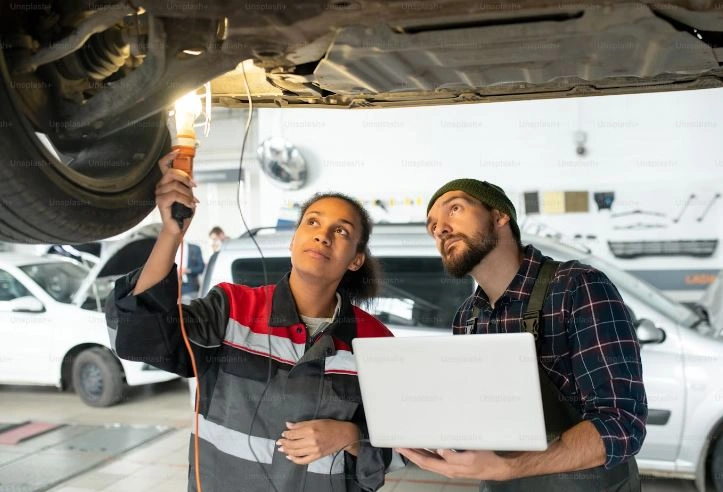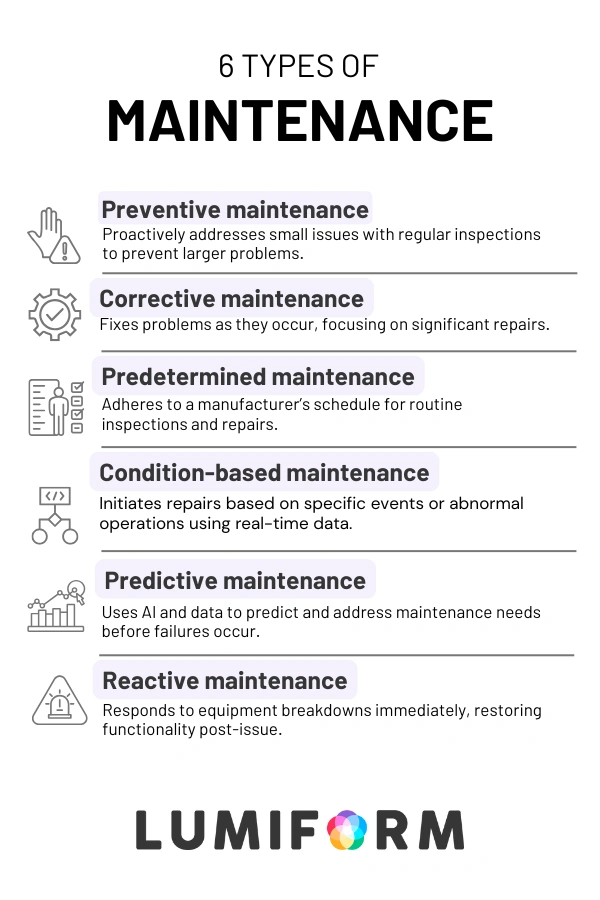Unlock the hidden potential of your maintenance operations—transform them into a strategic advantage that propels your organization forward. Are you ready to learn the major downtime-reducing maintenance strategies of top companies like Siemens and how they increase efficiency, setting a new standard in operational excellence?
Maintenance is no longer a background function—it’s a strategic powerhouse driving efficiency, sustainability, and profitability. This guide challenges you to rethink outdated practices and embrace innovative strategies that align with your business goals. Engage your teams, empower your leaders, and unleash the full potential of your assets. It’s time to elevate your maintenance culture from a cost center to a value creator, ensuring your organization not only survives but thrives in an ever-evolving landscape. Dive in and discover how to lead this transformation.
Discover 3 breakthrough maintenance success stories
Explore how leading organizations have revolutionized their maintenance strategies to achieve remarkable results. These case studies offer valuable lessons in driving efficiency, fostering innovation, and aligning maintenance with strategic goals. Discover actionable insights that can empower your team to excel in an ever-evolving landscape.
Drive continuous progress with lean practices: ThedaCare story
A Wisconsin-based health system, successfully implemented the Toyota Production System (TPS) to redesign clinical and administrative processes. This approach eliminated waste, boosted quality, and improved patient outcomes.
However, the only weakness here is in its implementation because when the leader who championed TPS left, the performance began to slip. The key takeaway is the importance of incorporating TPS in succession planning and instilling lean behaviors in managers to sustain improvements.
For an effective maintenance culture, you can adopt lean practices to streamline operations, reduce inefficiencies, and sustain improvements over time. This approach reinforces the importance of planning for leadership transitions to maintain momentum
Building a process thinking culture like UPS
Your organization can transform its attitude to maintenance with a culture of being constructively dissatisfied with the status quo. UPS, for instance, has a long-standing culture of process improvement, rooted in its structured process engineering work from the 1940s and 50s. The company embraced a mindset of being “constructively dissatisfied,” which fosters continuous improvement.
As UPS faced rapid growth and change, they realized the need to reinforce this culture through digitalization and specialized functions. The lesson here is the value of embedding process thinking into your organizational maintenance values to adapt to change.
Managers can leverage this mindset to adapt to changes and innovate continuously, ensuring processes remain efficient and responsive to evolving demands
Transform your organization through strategic alignment
A study by Boston Consulting Group highlights five companies that achieved transformation excellence by focusing on culture and process improvements. These organizations strategically invested in areas that delivered customer value, even while reducing the workforce in less critical areas.
The key insight is that aligning transformation efforts with customer needs and company values can drive significant growth and change. This means your team can strategically invest in areas that enhance operational efficiency and customer satisfaction, driving growth and reinforcing the organization’s core objectives.
How do I transform my maintenance into a strategic advantage?
Traditionally, maintenance was primarily reactive, focusing on fixing equipment after failures occurred. This approach often led to unexpected downtimes, increased costs, and inefficiencies. Maintenance teams were seen as a support function, responding to issues as they arose without strategic alignment with broader organizational goals.
Today, the concept is evolving into a proactive and strategic discipline. Maintenance is now defined as a forward-thinking approach that utilizes predictive and preventive techniques, enhancing maintenance culture and behaviors. By leveraging technology like IoT sensors and data analytics, it anticipates and addresses issues before they escalate. This shift not only reduces downtime and costs but also aligns maintenance activities with the organization’s strategic objectives.
For teams, the need to learn and adapt quickly is critical. Embracing new technologies and methodologies allows teams to enhance efficiency, drive innovation, and contribute significantly to the organization’s success. Transitioning to a proactive maintenance model helps teams ensure operational resilience and maintain a competitive edge in an ever-evolving landscape.
Strategic initiatives for your proactive maintenance culture
Organizations gain a competitive edge by strategically managing maintenance in today’s fast-paced world. Key initiatives include developing a clear vision, implementing predictive maintenance programs, and leveraging data analytics for informed decision-making. Aligning strategies with business objectives boosts efficiency, cuts costs, and improves asset reliability. Below are the detailed initiatives to transform your practices and drive success:
Strategic Initiatives
- Develop a Maintenance Vision and Strategy
- Action: Define a clear vision that aligns maintenance objectives with organizational goals. Engage executives to ensure top-down support.
- Impact: Aligns team efforts with business objectives and fosters a unified approach to maintenance.
- Implement Comprehensive Maintenance Programs
- Action: Adopt a holistic approach by integrating preventive, predictive, and corrective maintenance practices.
- Impact: Reduces downtime and costs while ensuring asset longevity and reliability.
- Leverage Data Analytics for Decision Making
- Action: Utilize advanced analytics to track performance metrics and optimize maintenance schedules.
- Impact: Informs strategic decisions, enhances efficiency, and reduces unnecessary expenditures.
- Enhance Workforce Training and Development
- Action: Invest in continuous staff learning to equip the maintenance team with the latest skills and knowledge.
- Impact: Improves productivity and ensures alignment with evolving industry standards.
- Strengthen Supplier and Partner Relationships
- Action: Build strong partnerships with suppliers to ensure timely access to quality materials and services.
- Impact: Enhances operational efficiency and supports sustainable maintenance practices.
These initiatives create a robust framework that supports business success. By embracing predictive methods and data analytics, companies stay agile, efficient, and ahead of the competition.
Challenge myths and misconceptions
You have to challenge the belief that maintenance is just about fixing things when they break. In reality, encourage your team to view it as a strategic function. A great culture focuses on preventing failures and optimizing performance through predictive and preventive strategies. By shifting from reactive to proactive maintenance, you can significantly enhance efficiency and reliability.
Next, refute the idea that maintenance is merely a cost center. Effective maintenance reduces costs by preventing breakdowns and extending asset life. When you view it as an investment in operational efficiency and asset longevity, you transform its perception within your organization.
Finally, dispel the notion that maintaining processes and assets is solely the responsibility of maintenance teams. Instead, recognize that the role is a cross-functional responsibility requiring collaboration across all departments.
By encouraging organization-wide participation, you align maintenance with broader business goals, thus enhancing overall effectiveness.
Unlocking your team’s potential
To truly excel in maintenance management, focus on enhancing your team dynamics. Begin by fostering a culture of continuous improvement. By encouraging feedback loops and holding regular team meetings to discuss improvements and innovations, you engage your employees and promote a culture of accountability and innovation.
Next, invest in training and skill development by providing ongoing training in new technologies and best practices. This strategic move helps you close the skills gap, increase job satisfaction, and reduce turnover. Your commitment to learning ensures that your teams remain at the forefront of industry advancements.
Finally, empower your teams with advanced tools by equipping them with mobile CMMS and AR tools for real-time data access and remote collaboration. This enhancement significantly boosts productivity and enables your teams to perform complex tasks efficiently, ensuring they are well-prepared to meet the challenges of modern maintenance demands.
Driving effective maintenance leadership
Today’s business meanings and expectations are changing fast. Assessing your leadership strengths and weaknesses helps you integrate leadership as a key driver of your organization’s maintenance culture.
For instance, empowering your leaders and showcasing convincing measurable successes helps you transform maintenance into a catalyst for innovation and growth, fostering a culture of excellence and resilience. So how can your organization ensure the culture trickles down from leadership?
Promote leadership in maintenance
Action: Develop leaders within the maintenance team by implementing tailored programs. Empower them to make decisions and foster a learning environment with continuous training.
Impact: Leaders drive a proactive maintenance culture, reduce downtime, and boost team morale, leading to lower turnover and a more cohesive team.
Align maintenance with business strategy
Action: Conduct regular executive reviews to align maintenance goals with business objectives. Map how maintenance supports these strategies and allocate necessary resources.
Impact: This alignment increases organizational cohesion, prioritizes maintenance as a strategic function, and enhances overall efficiency.
Measure and communicate success
Action: Establish KPIs to track maintenance effectiveness and regularly report successes to stakeholders. Implement a reporting framework and feedback loop to refine processes.
Impact: Demonstrating value through KPIs secures ongoing support, highlights areas for improvement, and drives continuous improvement in maintenance operations.
These actions transform maintenance into a strategic asset that supports business success.
Adopt energy-efficient & innovative practices
Embracing sustainability and innovation in your maintenance practices is crucial. Start by utilizing sustainability audit tools and resources that encourage smoother adoption of green practices. Implement energy-efficient technologies and manage resources sustainably to reduce your environmental footprint. This aligns your operations with global sustainability goals, ensuring you remain eco-friendly and future-ready. Next, integrate robotics and automation into your processes. Utilize robotics for routine tasks to free up your team for more complex activities. This shift increases efficiency and allows you to focus on strategic initiatives that drive long-term success.
Finally, enhance communication and collaboration by using 5G and cloud-based platforms. This ensures seamless communication across your teams and departments, improving response times and fostering a collaborative environment. By doing so, your operations become more agile and responsive to challenges.
Elevate your maintenance strategy with the Lumiform advantage
Ready to optimize your maintenance processes? Start by reviewing your schedule, gathering team feedback, and updating protocols.
Use Lumiform’s platform to explore and implement strategies with our template tools, libraries, and automation features. Elevate your standards and audit across your business for improvement and compliance. Let’s transform your operations together!
Click here to get started.

